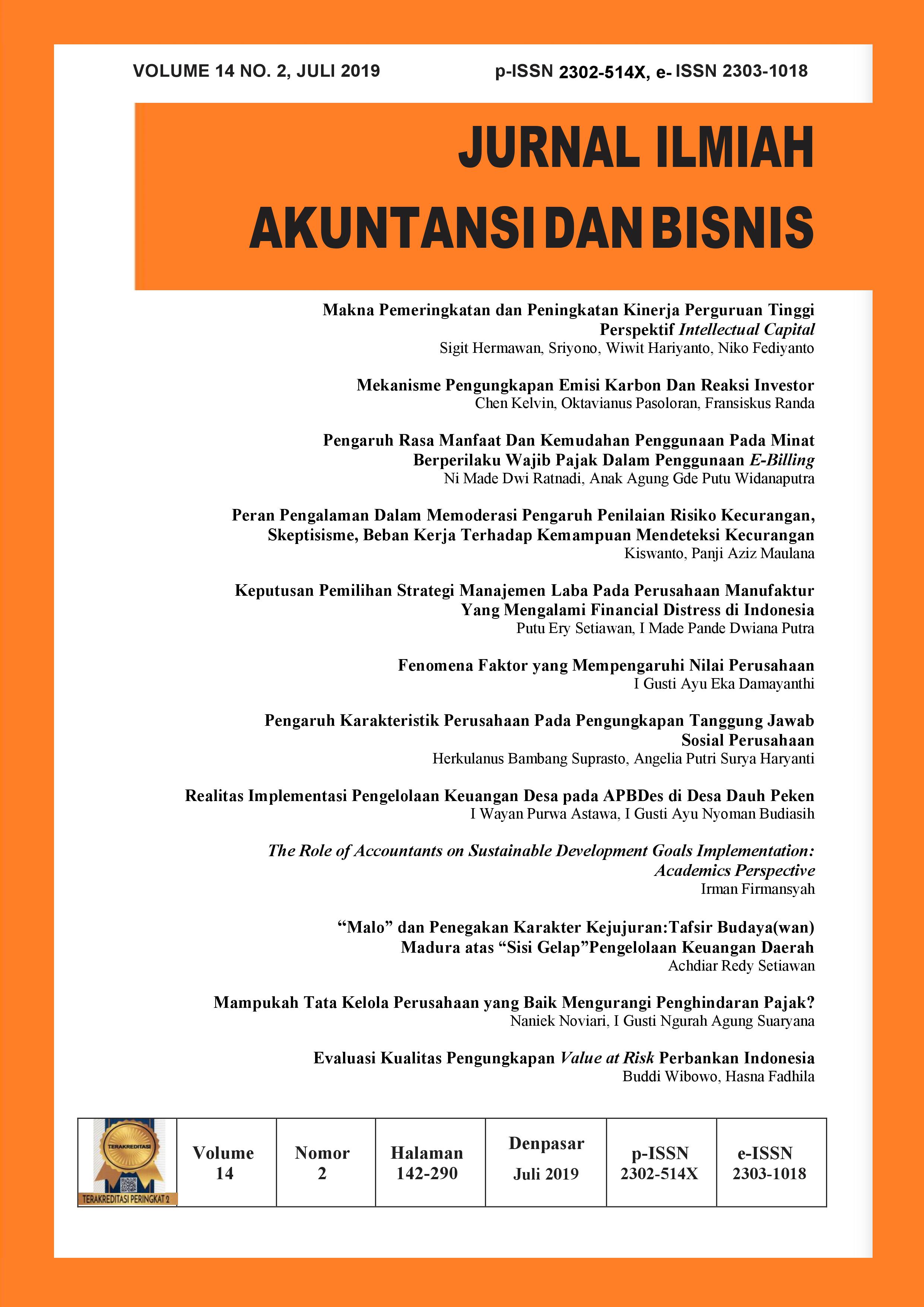Evaluasi Kualitas Pengungkapan Value at Risk Perbankan Indonesia
Abstract
Market risk measurement of bank investment portfolios is a still problem not only among practitioners, but also among academicians. The accuracy and quality of market risk disclosures are important issues because transparency of the bank risk level encourages market control in the form of market discipline and it also improves the quality of risk management carried out internally by the bank. This research measures the quality of Value at Risk disclosures carried out by Indonesian banks. The accuracy of Value at Risk in this research is measured from the Value at Risk component which contains information of yield volatility of bank trading treasury activities. To measure Value at Risk disclosure, this research runs various methods of Value at Risk measurement. This research shows that Historical Simulation is the most widely used method of measuring Value at Risk by Indonesia banks. The empirical test results however show that using asymmetric volatility gives better quality Value at Risk parametric measures than the historical Value at Risk Simulation method. This research shows that Value at Risk as measured by Historical Simulation method contains the least information on bank trading treasury yields.
Keywords: Value at risk; disclosure; market risk; volatility
Downloads
References
Baba, N., & Packer, F. (2009). From turmoil to crisis: Dislocations in the FX swap market before and after the failure of Lehman Brothers. Journal of International Money and Finance. https://doi.org/10.1016/j.jimonfin.2009.08.003
Berger, T., & Missong, M. (2014). Financial crisis, Value-at-Risk forecasts and the puzzle of dependency modeling. International Review of Financial Analysis. https://doi.org/10.1016/j.irfa.2013.07.006
Bollerslev, T. (1986). Bollerslev,Generalized Autoregressive Conditional Heteroskedasticity.pdf. Journal of Econometrics. https://doi.org/10.1016/0304-4076(86)90063-1
Cohen, B. H., & Scatigna, M. (2016). Banks and capital requirements: Channels of adjustment. Journal of Banking and Finance. https://doi.org/10.1016/j.jbankfin.2015.09.022
Cuoco, D., & Liu, H. (2006). An analysis of VaR-based capital requirements. Journal of Financial Intermediation. https://doi.org/10.1016/j.jfi.2005.07.001
Danielsson, J., James, K. R., Valenzuela, M., & Zer, I. (2016). Model risk of risk models. Journal of Financial Stability. https://doi.org/10.1016/j.jfs.2016.02.002
Engle, R. F. (1982). Autoregressive Conditional Heteroscedasticity with Estimates of the Variance of United Kingdom Inflation. Econometrica. https://doi.org/10.2307/1912773
Gauthier, C., Lehar, A., & Souissi, M. (2012). Macroprudential capital requirements and systemic risk. Journal of Financial Intermediation. https://doi.org/10.1016/j.jfi.2012.01.005
Jorion, P. (2002). How informative are value-at-risk disclosures? Accounting Review. https://doi.org/10.2308/accr.2002.77.4.911
Mincer, J., & Zarnowitz, V. (1997). The Evaluation of Economic Forecasts. In Economic Forecasts and Expectations: Analysis of Forecasting Behavior and Performance.
Nieto, M. R., & Ruiz, E. (2016). Frontiers in VaR forecasting and backtesting. International Journal of Forecasting. https://doi.org/10.1016/j.ijforecast.2015.08.003
Ning, C., Xu, D., & Wirjanto, T. S. (2015). Is volatility clustering of asset returns asymmetric? Journal of Banking and Finance. https://doi.org/10.1016/j.jbankfin.2014.11.016
Pérignon, C., & Smith, D. R. (2010). The level and quality of Value-at-Risk disclosure by commercial banks. Journal of Banking and Finance. https://doi.org/10.1016/j.jbankfin.2009.08.009
Schaeck, K., Cihak, M., Maechler, A., & Stolz, S. (2012). Who disciplines bank managers? Review of Finance. https://doi.org/10.1093/rof/rfr010
Wibowo, B. (2017). Banking Competition Measurement and Banking Sector Performance: Analysis of 4 ASEAN Countries. Signifikan: Jurnal Ilmu Ekonomi. https://doi.org/10.15408/sjie.v6i1.4547




















